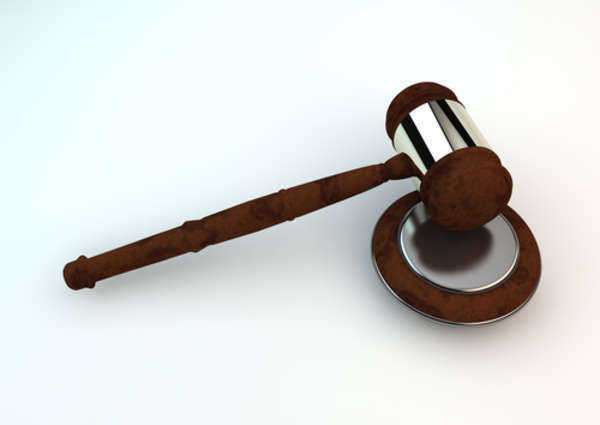Read This About Civil Court Before Going to Court

Read This About Civil Court Before Going to Court: Understanding the Basics of Civil Court Proceedings
Civil court proceedings can be complex and intimidating for those who are unfamiliar with the legal system. Whether you are involved in a dispute with another individual or business, it is essential to understand the basics of civil court proceedings before going to court. In this article, we will cover some important information you need to know.
The Purpose of Civil Court
Civil court is a branch of the legal system that deals with non-criminal disputes between two parties, usually involving personal injury, breach of contract, property or monetary disputes. In general, these disputes involve one party seeking compensation or damages from the other. The main objective of civil court is to resolve these disputes and provide a fair resolution to both parties.
Preparing for Court
Before going to court, it is important to seek legal advice and prepare your case. The following are some steps to consider:
1. Consult with an Attorney – An experienced attorney can provide guidance on the law related to your case and the best approach to presenting your case in court.
2. Evidence Gathering – Collect evidence and document all the details relevant to your case, including invoices, contracts, contracts, medical records, and testimonies from witnesses.
3. Pre-Trial Conference – In some jurisdictions, there may be a pre-trial conference where both parties and their attorneys present their case to a judge, and the judge may suggest the appropriate resolution of the dispute.
The Court Process
The civil court process typically involves the following steps:
1. Summons and Complaint – The plaintiff initiates a lawsuit by filing a summons and complaint that identifies the parties involved, the nature of the dispute and the remedy sought.
2. Response – The defendant must respond to the summons and complaint within a specified time frame or risk default judgment.
3. Discovery – Both parties will have the opportunity to discover and present evidence through interrogatories, depositions and document requests.
4. Settlement Negotiations – The parties may engage in settlement negotiations before proceeding to a trial.
5. Trial – If negotiations fail, there may be a trial in which both parties present their case before a judge and/or jury.
The Importance of Legal Representation
The legal system is complex, and the rules can be difficult to understand. Civil court trials can be expensive and complex, and it is important to have experienced legal representation to protect your rights and interests. In many cases, an experienced attorney can help you achieve a better outcome and save you money and time in the long run.
Conclusion
Civil court can be overwhelming, but by understanding the basics of the court system and preparing your case well, you can navigate the legal process with greater confidence. Ensure that you have legal representation and rely on the guidance of your attorney to help you achieve a fair outcome in your case.
What is a Civil Court?
A civil court is the physical venue where civil matters are heard; all civil courts will attempt to find a resolution for cases involving non-criminal matters, such as divorce cases, child custody hearings, personal injury matters, and disputes involving landlords and tenants.
Additionally, a civil court will hear matters involving credit card payment disputes, breach of contract allegations and compensation for injuries suffered from automobile accidents. A lawsuit may be filed in a civil court system by any individual or business entity who feels as though they have been injured or hurt (financially or physically) by another individual or business entity.
Civil Court Functions:
The civil court system will provide a community a means to resolve their particular issues; disgruntled individuals or companies may seek a resolution by commencing litigation in the civil lawsuit. A matter in a civil court hearing is presided over by a judge; the judge in a typical civil court case acts as an unbiased adjudicator who will listen to both claims (made by the defense and prosecuting party) to deliver a resolution within the bounds of the particular legal matter.
Although the judge renders the decision, the parties have the right to seek a jury to help determine the outcome of their case; when a jury is selected in a civil trial, the jurors will listen to both parties and follow the same course of action as the judge when seeking the resolution. The majority of civil court systems throughout the nation will also employ retired attorneys, who will act as intermediaries to help facilitate the resolution process.
Types of Civil Court Systems:
The civil court system is not used to resolve criminal matters, nor should be used for disputes that can be resolved without the need of a court system or formal intervention. Filing a civil lawsuit is not free; any individual or business entity who files a civil lawsuit must pay a court filing fee and subsequently pay the coordinating sheriff a fee to process and serve the suit to the other party. Additionally, the cost of legal representation and the fees associated with securing evidence and witnesses can be considerable.
Civil court cases are never brought forward by the underlying state government; civil court cases are only brought by individuals or corporations. Additionally, a judge and jury does not determine innocence or guilt in a civil case as they do in criminal matters; the deciding bodies in a civil court case only rule in favor of a party for means of compensation or the delivery of a particular service. As a result, the defendants in a civil law case will never receive jail time as part of the jury/judge’s decision—incarceration is only permitted as a form of punishment in a criminal court case.





























